 Music
Music  Music
Music  History
History 10 Less Than Jolly Events That Occurred on December 25
 Weird Stuff
Weird Stuff 10 Funny Ways That Researchers Overthink Christmas
 Politics
Politics 10 Political Scandals That Sent Crowds Into the Streets
 Weird Stuff
Weird Stuff Ten Bizarre Facts About The Doge Meme
 Our World
Our World 10 Ways Your Christmas Tree Is More Lit Than You Think
 Movies and TV
Movies and TV The 10 Coolest Stars to Set Sail on The Love Boat
 History
History 10 Things You Didn’t Know About the American National Anthem
 Technology
Technology Top 10 Everyday Tech Buzzwords That Hide a Darker Past
 Humans
Humans 10 Everyday Human Behaviors That Are Actually Survival Instincts
 Music
Music 10 Surprising Origin Stories of Your Favorite Holiday Songs
 History
History 10 Less Than Jolly Events That Occurred on December 25
 Weird Stuff
Weird Stuff 10 Funny Ways That Researchers Overthink Christmas
Who's Behind Listverse?

Jamie Frater
Head Editor
Jamie founded Listverse due to an insatiable desire to share fascinating, obscure, and bizarre facts. He has been a guest speaker on numerous national radio and television stations and is a five time published author.
More About Us Politics
Politics 10 Political Scandals That Sent Crowds Into the Streets
 Weird Stuff
Weird Stuff Ten Bizarre Facts About The Doge Meme
 Our World
Our World 10 Ways Your Christmas Tree Is More Lit Than You Think
 Movies and TV
Movies and TV The 10 Coolest Stars to Set Sail on The Love Boat
 History
History 10 Things You Didn’t Know About the American National Anthem
 Technology
Technology Top 10 Everyday Tech Buzzwords That Hide a Darker Past
 Humans
Humans 10 Everyday Human Behaviors That Are Actually Survival Instincts
10 Gargantuan Facts About Whales
Whales are some of the most majestic creatures on the planet. Their sheer size is enough to capture our imagination, but they also happen to be among the most intelligent animals in existence. The word “whale” has occasionally been considered to include porpoises and dolphins, but this article is about the giant creatures of the sea—the sperm whales, blue whales, humpbacks, orcas, and many others—that have inspired legends all around the world.
10Gray Whale Group Sex

The mating rituals of gray whales are unusual in that they always reproduce during group sex. Typically the whales split into a group of three—one female and two males. While other male animals are known to fight over partners, some think the second gray whale male gets involved to help position the female to make it easier for the mating partner. The whales mate near the surface, which means their 1.5 meter (5 ft) penis will sometimes stick out of the water in all its terrifying glory.
Helping a buddy with a lady is just the start of how close the males become. They also participate in homosexual orgies with up to five participants. They rub together their bellies, intertwine their penises, and nudge their heads against each other’s genitals. These sessions can go on for up to 90 minutes. The sex is just part of the bonding between males, who also like to swim close together and form friendship groups that can last for several years.
9 The Loneliest Whale In The World
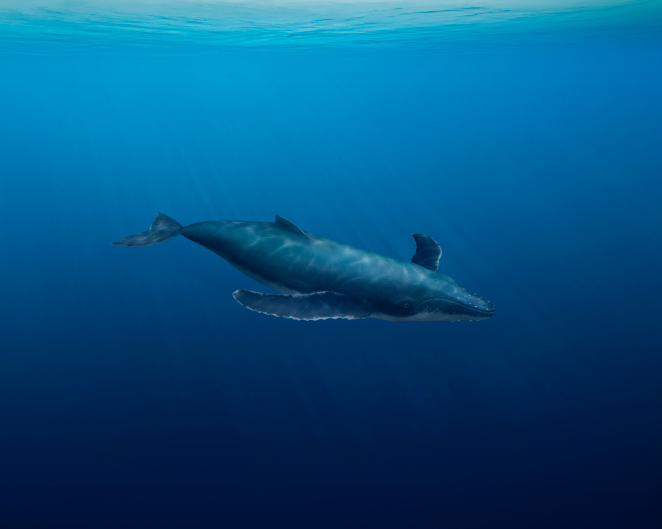
Scientists have been tracking a single whale for the past 20 years, yet nobody has ever seen it. It’s known as the 52 hertz whale, because it calls at that frequency—a frequency that has only ever been heard from this particular whale. Its nickname, “the loneliest whale in the world,” comes because it never receives an answer. The whale was first recorded in 1989 by US Navy hydrophone arrays, and was subsequently noticed by William Watkins of Massachusetts’ Woods Hole Oceanographic Institution. Since then it’s been tracked all around the North Pacific, from the coastline of California to Alaska.
The story of the lonely whale strikes a particularly human chord. It’s inspired people to create art, compose songs, and even write a play. A documentary crew are planning to try to find the whale next year, but one of the scientists on the team thinks it may not be as alone as its reputation suggests. It’s entirely possible that the creature—which is probably a fin whale with a vocal anomaly—is part of a group of whales with typical voices, and not alone at all.
8The Whale That Ate Whales
Scientists in Peru have uncovered the fossilized jaws of an extinct whale with a truly terrifying bite. They have called it Leviathan melvillei, named after Herman Melville of Moby Dick fame. While the beast is about the same size as a current living species of sperm whale, Physeter macrocephalus, its teeth and jaw muscles were much larger. That’s because its choice of lunch was very different.
Modern sperm whales suck squid into their mouth and chew them up. Their teeth don’t get longer than around 20 centimeters (eight in). While that seems quite big, melvillei had teeth twice that size. Their choice of prey was baleen whales—the suborder that includes humpbacks and the blue whale. The high blubber content (and of course the size) made their toothless cousins a worthwhile meal.
7Lamalera Whale Hunters
With Leviathan melvillei gone there aren’t many species left that can hunt whales. Of those that can, Homo sapiens is by far the deadliest. While many people associate whaling with the Japanese and their large scale expeditions, there are a few indigenous cultures that still catch whales in traditional ways. Aboriginal people were granted exceptions to the international ban on whaling in 1982. Undoubtedly the most spectacular whaling method is that of Indonesia’s Lamalera people.
Lamalera villagers catch migrating sperm whales by sailing out in small wooden boats, then diving at the beasts with long spears. These spears are attached to ropes, and it’s not unusual for boats to be dragged under the waves. The villagers battle with the whale for hours, often ending up swimming next to it. This is risky, given that the whales can be up to 15 meters (50 ft) long. They also have the huge teeth we mentioned before. Sometimes, not everyone on the hunt will return to shore.
The person that delivers the killing blow, by diving into the water and stabbing a blade through the whale’s spine, gets the greatest share of the meat. Only around six whales each year are caught using this method, and it feeds the Lamalera for months at a time.
6Whale Farming

The idea of a whale farm may seem ridiculous (and most people agree that it is) but that hasn’t stopped people from seriously making the suggestion. In 2002, Hirado, a city in Japan’s Nagasaki prefecture, announced a plan to trap minke whales in a small area of the ocean. They hoped to breed the whales in captivity, including the use of artificial insemination, and eventually set up viewing platforms for visitors.
Experts suggested the plans were both unethical and impractical. Like most species, minke whales are migratory and swim thousands of miles. Convincing them to breed would be a challenge, as would providing enough food. The head of the Japanese Institute of Cetacean Research, which organizes Japan’s whaling activities, was more enthusiastic—he called it the realization of a dream. As it turned out, the dream is yet to materialize.
Whale farming has also been the subject of an April Fools’ Day prank by NPR. They broadcast a selection of listeners’ comments, apparently in response to a story about an inland whale farm in Belleville, Illinois. While the joke may have seemed obvious (Belleville is NPR’s usual prank target), it was enough to make “farm-raised whales” a popular Google search for a while.
5Whale Worship
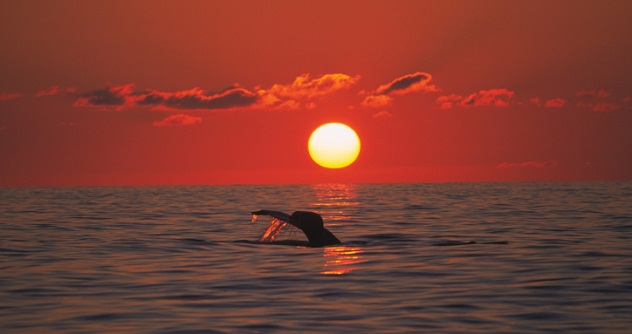
Whales appear in the myths and cultures of a wide number of people, but today they feature most prominently in Vietnam. The country’s coastal villages are known for their whale temples. Fisherman worship the creatures, who they consider to be like gods or angels. The fishermen report that whales have guided them back to safety if they get caught in storms, so they perform elaborate prayer rituals to the whales before heading out to sea.
If a dead whale is found on a beach, the nearby villages will mourn its passing in a spectacular fashion. They drag its body to a whale cemetery at one of their temples, where it is buried. Then, after several years, they exhume the bones and carry them around the streets in a parade featuring costumed dancers, music, and martial arts. The bones are returned to the temple for display. Some of the temples are hundreds of years old.
These traditions have been an unexpected victim of climate change. In many areas sea levels have actually fallen, extending the shoreline several hundred meters further from the temples. A whale carcass is both big and heavy—dragging it that much further is a lot of work.
4Whale Deaths
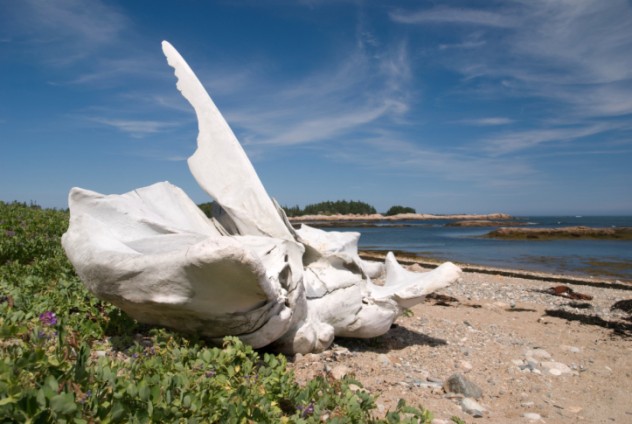
Even when we’re not killing them on purpose, humans can be a big problem for whales. Human sonar, such as that used to map ocean floors, might cause whales to become confused and beach themselves. In 2008, 100 whales were stranded in Madagascar. The official report blamed an echo sounder system operated by a contractor of ExxonMobil. The petrochemical company themselves rejected the report, which was the first rigorous investigation to link sonar with whale deaths.
In Ghana, an unusual spate of whale deaths has led local environment groups to blame the petrochemical industry, though there is no confirmed link. The groups say the whale deaths only began with the introduction of oil rigs in 2009. Whoever is right in those cases, there is one human activity that everyone agrees is bad for whales: shipping.
Shipping routes along the west coast of America coincide with whale populations, resulting in a number of collisions. Since 2001, 60 whales have been hit by ships off California’s coast alone. It is never the ships that come off worse—whales are often severely injured and killed. For some species, reducing ship collisions could be the difference between survival and going extinct.
In San Francisco Bay, officials have turned to the current solution to most problems—a phone app. The app allows sailors to plot the position of any whales they sight, so that safer routes can be planned for the 7,300 vessels that sail out of the city’s harbor every year.
3Whale Riding

Most people from outside of Australia would hardly dare to go near the local waters for fear of being killed by the creatures lurking beneath the surface. If the reputation of Australia’s animals doesn’t put people off, it’s also illegal to harass wildlife. In terms of whales, you aren’t allowed to swim closer than 30 meters (98 ft). None of that stopped Aussie teen Sam Matheson from jumping off a coral reef and grabbing hold of a southern right whale. The 14-year-old then clung on while the whale carried him around. He was later forced to apologize, but let off with a caution.
In nearby New Zealand, whale riding forms a key part of the mythology of some Maori cultures. Their legends tell of Paikea, a young man who ended up stranded at sea after his brothers plotted to kill him. Paikea was saved by a whale named Tohora. He rode on the whale’s back to a nearby settlement and began a prosperous life. This legend formed the basis of a novel and acclaimed movie named Whale Rider, about the Whangara people, whose leaders are said to be the direct firstborn male descendants of Paikea. The movie tells the story of a young woman trying to prove herself worthy to succeed her grandfather and become their first female leader.
2The Blue Whale Song Mystery
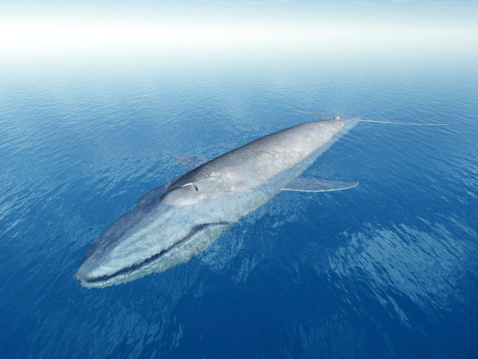
The identity of the 52 hertz whale is not the only puzzle brought to light by recordings of whale song. Another mystery surfaced when the staff at Whale Acoustics, a company specializing in equipment for recording whale calls, found themselves having to re-calibrate their equipment each year. The problem was that vocalizations from blue whales were getting deeper and deeper. Whale Acoustics got together with scientists from the Scripps Institution of Oceanography to investigate older recordings and found the same pattern going back to the 1960s. Biologists simply don’t know why it is happening.
If the whales were trying to be heard over increased shipping traffic, they’d go for a higher pitch. Another possibility is that when we started recording the whales their populations were quite low—the first half of the 20th century saw them nearly hunted to extinction. They may have needed higher pitches to hear each other when spread out, but population recovery has allowed them to drop back down. Yet even groups of whales that escaped over-hunting have shown the same pattern. An alternate explanation is that, since only male blue whales sing, their songs may be related to mating. As larger whales tend to produce deeper songs, it might just be that smaller males have started emulating them—triggering a chain reaction of whales singing in progressively deeper voices.
1Whale Culture Is Extremely Advanced
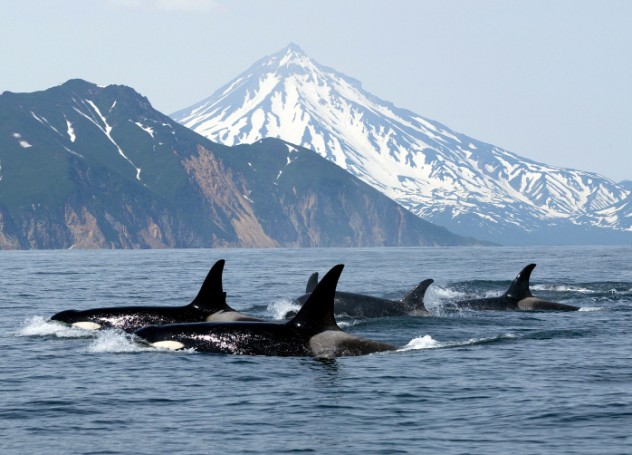
Culture is one of those things that we usually only discuss in human terms, yet the ability to pass on ideas exists elsewhere in the animal kingdom. Our primate cousins, such as monkeys and chimpanzees, are key examples. Yet outside of our own order, the most advanced culture known is found among whales.
Cetaceans are intelligent. Normally dolphins get the good press in this area, and to be fair they are quite clever, boasting one of the highest brain-to-body mass ratios on Earth. But orcas aren’t far behind—their brains are the second largest in the sea, and their brain-to-body mass ratio is similar to a chimpanzee. The largest brains on the planet belong to sperm whales, while the most surface area can be found in the heads of humpbacks. It stands to reason whales could do amazing things with all that computing power—and they are.
Research into the complexity and stability of cultural behavior and vocalizations among killer whales has found “no parallel outside humans.” During the 1980s, a small number of humpback whales developed a method of catching prey known as lobtail fishing. Since then, scientists have monitored its spread through the whales’ social groups and figured out they’ve been learning it from each other.
Research into sperm whales has found that they live in what are essentially multicultural societies. In the South Pacific there are five distinct dialects of whale clicks, and even though the whales may overlap geographically, they avoid interaction with whales outside their own clan. Different behaviors appear in whales with differing calls. Around the Galapagos Islands, whales that use five clicks in a row swim in winding routes close to land, whereas a group that leaves a pause in place of their fourth click swim in straighter lines further out to sea.
Alan is a full-time writer who you can pester on Twitter, email, or read his blog (which he promises to update more often) at skepticalnumber.com.








